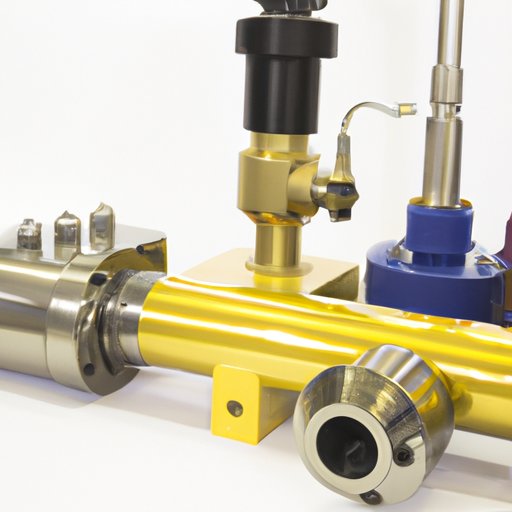Introduction
Hydraulics is a branch of engineering that focuses on the mechanical properties of liquids. It is used to create and utilize pressure in order to generate mechanical force, enabling objects to move and perform tasks. This powerful technology is widely used in the automotive, construction, agriculture, aerospace, and aviation industries.
Exploring the Power of Hydraulics in Machines
The most basic hydraulic system consists of two components: a pump and a cylinder. The pump is used to pressurize the liquid, while the cylinder is used to convert the pressure into a force. The force is then used to move an object or machine.
The fluid used in a hydraulic system is typically an oil-based fluid such as mineral oil or synthetic oil. This fluid is non-compressible, meaning it will not change volume when subjected to pressure. This property allows the system to transfer power efficiently and accurately.
Examples of Hydraulic Applications
Hydraulics are used in a variety of industries and applications. In the automotive industry, hydraulics are used to control brakes, clutches, and suspension systems. They are also used to power hydraulic lifts and car jacks.
In the construction and agriculture industries, hydraulics are used to power excavators, bulldozers, and other heavy machinery. They are also used to operate cranes, hoists, and winches.
In the aerospace and aviation industries, hydraulics are used to control the flight surfaces of aircraft. They are also used to open and close doors, and to operate landing gear.

Understanding the Physics Behind Hydraulics
The power of hydraulics comes from two physical principles: pressure and flow. Pressure is the force applied to an area, while flow is the movement of a fluid through a pipe. When a pressure is applied to a fluid, it will move in the direction of least resistance.
These two principles are governed by Pascal’s Law, which states that the pressure applied to a confined fluid is transmitted undiminished throughout the entire system. This means that the pressure applied at one point in the system will be equal to the pressure at any other point in the system.

The Benefits of Hydraulic Technology
Hydraulic technology offers many advantages over other forms of power transmission. It is more efficient than mechanical systems, as it is able to transfer power with minimal energy loss. It is also more reliable, as it is less prone to breakdowns and requires less maintenance.
Hydraulic systems also offer improved safety, as they can be designed to shut off automatically in the event of a malfunction. This reduces the risk of injury to personnel.
Conclusion
Hydraulics is a powerful technology that is used in a variety of industries and applications. It relies on the principles of pressure and flow, as well as Pascal’s Law, to generate mechanical force. Hydraulic systems are more efficient and reliable than other forms of power transmission, and offer increased safety for personnel.
(Note: Is this article not meeting your expectations? Do you have knowledge or insights to share? Unlock new opportunities and expand your reach by joining our authors team. Click Registration to join us and share your expertise with our readers.)
